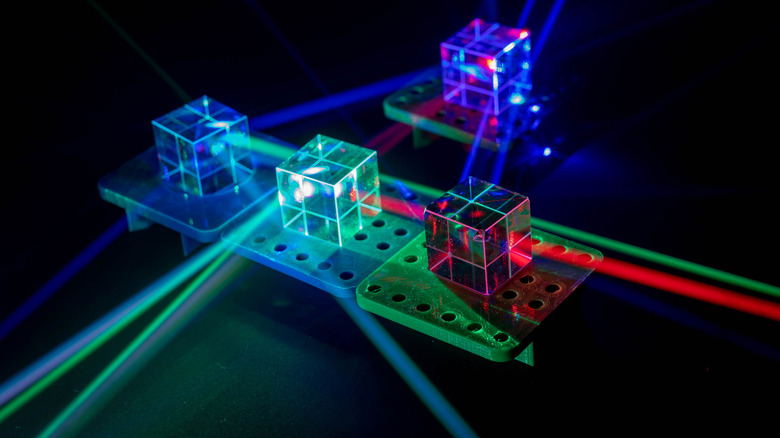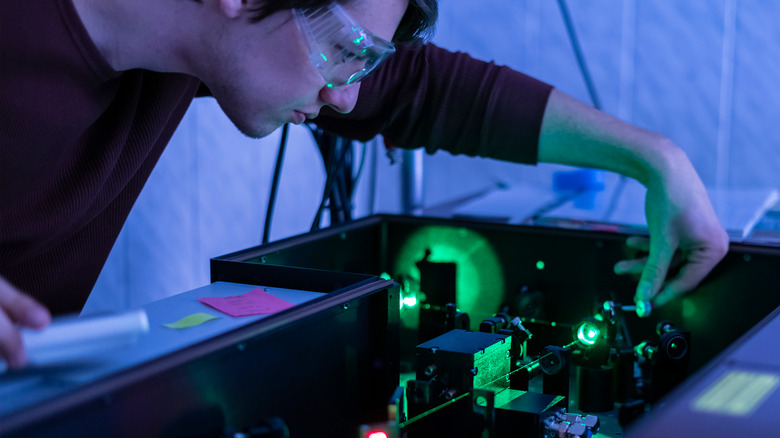How A Danish Physicist Was Able To Slow Down The Speed Of Light
The speed of light is a constant in our universe. In a vacuum, light travels rapidly, an impressive 186,282 miles per second (via Space.com). According to the American Museum of Natural History, the speed of light is the fastest anything can go in our universe. It can be thought of as the "speed limit" of everything. For the most part, light tends to stay at this speed. It doesn't go faster, and it rarely goes slower. Yet one Danish physicist was able to manipulate light and stop it in its tracks.
Lene Hau of Denmark is a world-renowned physicist for her work with light. Hau became the first to successfully slow down light in 1999, and has since been able to stop it, move it around, and more. According to Hau, "We can hold on to the light, move it around or even save it for later. We can actually manipulate it" (via Science Nordic). But just how is she able to pull off these impressive tricks? Believe it or not, there is no magic involved — just science.
Light can be slowed down using special instruments and techniques
In order to slow down the speed of light, Lene Hau had to create a complex set up. According to Science Nordic, Hau had to cool down atoms in the air to extremely low temperatures near absolute zero. This caused the atoms to become a Bose-Einstein condensate, a state of matter where atoms cooled to near zero come together on a quantum level (via Britannica).
The reason Lene Hau required a Bose-Einstein condensate in order to manipulate light involves a lot of complicated physics. Since atoms in a Bose-Einstein condensate come together at the quantum level, they all act together as one "super atom" (via Physics Central). As it turns out, this type of super atom is really good at slowing down light, compared to other materials. While other materials cannot slow down light enough to be noticeable to the human eye, a Bose-Einstein condensate can (via Nature).
Research with light speed can answer questions about our universe
So why even slow down light in the first place? Other than being a cool party trick, ultraslow light experiments can help us discover more about complex physics concepts. According to Lene Hau, "slow light has a tremendous variety of applications" (via Physics Central). Light that has been slowed down or stopped could one day be used in future computers to carry information. This would allow for all-optical computing systems, which could potentially process information faster than we have ever seen before (via the U.S. Department of Energy – DOE). Wireless communications might also get a speed boost, says the DOE.
Other applications for manipulated light include experiments aimed at answering some of the most important questions in physics. As Hau states, "The aim has been fundamental research, that is, learning new things about nature. In the long term ... we might be able to use it for areas such as information processing in both areas of classical information and quantum information" (via Science Nordic).


